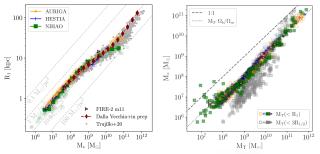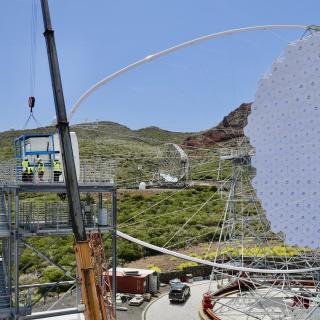In the current cosmological model, galaxies are formed in a hierarchical way, by merging with each other. These mergers can lead to kinematic anomalies that can be used to shed light onto the formation history of the galaxy. However, it is important to be able to distinguish whether these anomalies are an unambiguous signal of a past merger or if they can originate from different processes. One of these kinematic anomalies is prolate rotation. A galaxy shows prolate rotation if it rotates around its major axis. This kinematic characteristic is relatively frequent in massive galaxies and it becomes less abundant when we move towards lower masses. In the Local Group there are only two known examples of dwarfs that show prolate rotation (Phoenix and Andromeda II). Cosmological simulations show that in massive galaxies prolate rotation is strongly related to previous mergers. In the dwarfs regime, idealised simulations have shown that it is possible to reproduce this particular kinematic property through mergers, however, it remains to be shown whether this is possible in a cosmological context. Here we have made use of hydrodynamical cosmological simulations with the aim of identifying dwarf galaxies with prolate rotation. From the 27 dwarfs explored, only 1 galaxy shows clear rotation around its major axis, whose origin can be linked to a merger with another galaxy 9 billion years ago. This galaxy shares with Phoenix and Andromeda II not only its particular kinematics, but also the way in which the metals are distributed inside the galaxy, being the central parts much more metallic than the outskirts. This distribution is also related to the merger that caused the prolate rotation. The older and less metallic stars were expelled to the outskirts by the merger, while the residual star formation kept increasing the central metallicity, building in that way a very steep metallicity gradient. In this work we have shown for the first time how it is possible to form dwarf galaxies with prolate rotation in a cosmological context, as well as how the mergers offer a viable explanation for the formation of such peculiar systems, characterized by steep metallicity gradients and prolate rotation.
Two different frames of the galaxy evolution, being an oblate system at early times (left) which is transformed into a prolate spheroid (right) due to a merger. Top: Line of sight velocity map. Bottom: RGB rendering using I, V, B filters.
Advertised on
Authors
Salvador
Cardona Barrero
Giuseppina
Battaglia
Arianna
Di Cintio
P. Jablonka
References




